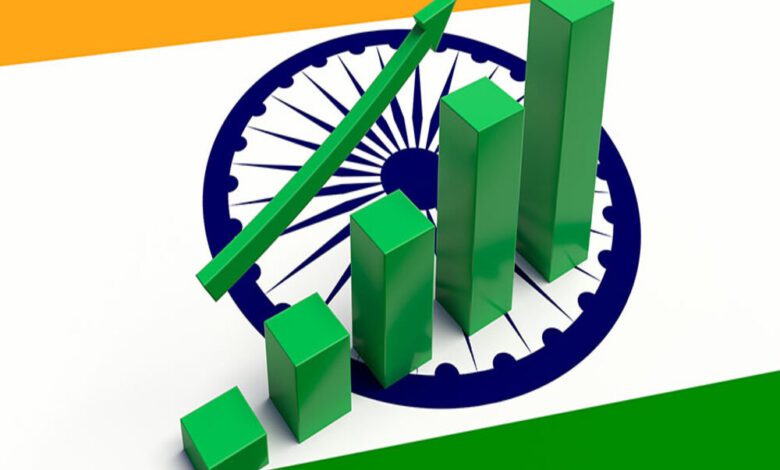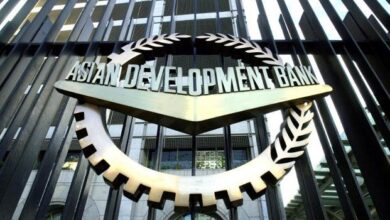India’s economy grows the fastest in June quarter, expected to maintain the speed till year-end
Economists say lower commodity prices helped the manufacturers increase margins and offset the impact of 250 basis points of cumulative interest rate increases since May 2022.

India’s economy grew at its quickest pace in a year in the April-June quarter, buoyed by a strong activity in the services sector and robust demand, but economists foresee a slowdown as drier than normal monsoon season could restrain future growth.
The median projection of economists revealed that Gross Domestic Product (GDP) expanded 7.8% on an annual basis in the June quarter, accelerating from 6.1% growth recorded in the year’s March quarter and topping a 7.7% forecast according to a poll. This quarter’s growth rate is faster than what the country experienced in the April to June quarter in 2022. It was the highest reading since the June quarter of 2022, when growth stood at 13.1%.
According to the economists, falling commodity costs have allowed for manufacturers to raise profits and somewhat offset the 250-basis point increase in interest rates since May 2022.
India, being the third-largest economy in Asia, has been able to protect itself from the global downturn that has left several economies, including China, faltering. India’s services sector, which accounts for more than half of its economic output, has had strong growth.
What keeps the economy moving
“The push is provided by the services sector where both trade, transport and finance and real estate have grown by 9.2% and 12.1% in high base growth rates,” said Madan Sabnavis, economist at Bank of Baroda. Construction activity growth was also strong at 7.9% but most economists warned that dry conditions could hurt future growth in the coming quarters.
India’s Chief Economic Advisor V. Anantha Nageswaran maintained his 6.5% growth forecast for the full year. “Growth prospects appear bright, though external factors pose a downside risk,” Nageswaran stated.
Capital Economics’ Thamashi De Silva said that India’s GDP data was strong despite policy tightening by the Reserve Bank of India. The RBI has raised its interest rate by 250 basis points since May 2022.
“Going forward, we need to watch for risks to the agriculture sector, sustenance of capex push from central and state governments, global demand conditions, and lagged impact of interest rate hikes,” said Suvodeep Rakshit, senior economist at Kotak Institutional Equities. Suvodeep said that he expects growth to be driven by services on the output side and investment on the expenditure side.
In the April-June quarter, private consumption, which accounts for nearly 60% of the economy, grew about 6% year-on-year, up from 2.8% in the March quarter, while manufacturing expanded 4.7%, compared with 4.5% in the last three months. However, growth in capital formation, an indicator of investment, eased to about 8% year on year from 8.9% in the previous three months.
S&P Global India services Purchasing Managers’ Index has remained firmly above the 50-mark separating growth from contraction for nearly two years, the longest stretch since August 2011.
The Indian government has been putting more money toward infrastructure each year to stimulate growth. India spent roughly 28% of its 10 trillion INR ($120.91 billion) capital expenditure budget in the first three months of the fiscal year, which began on April 1.
Kaushik Das, chief economist for India at Deutsche Bank, said that a 3 per cent drop in wholesale prices will also boost the nation’s strong headline growth by lowering the “GDP deflator,” which is used to estimate real economic growth by excluding price increases.
A ‘monsoon setback’ expected
According to economists, the price effect may change in the upcoming months, and the rapid growth may see a slowdown as the country is expected to receive average rainfall in September.
August has seen the driest rainfall in more than a century after an above average rainfall in July, which has shot up the cost of basic foods and reduced discretionary expenditure. In India’s hinterlands, where agriculture provides the majority of the country’s income, dry weather could also reduce agricultural productivity and weaken the influence of the locals.
A comparison to higher growth rates from a year ago as well as slowing exports and global growth will also have an impact on future quarters’ growth. Rahul Bajoria, an economist at Barclays, stated that there is some evidence that the activity is decreasing sequentially. “The market as a whole believes that things will slow down.”
Finance Minister Nirmala Sitharman said in a recent interview that the country’s economic growth will be robust at least till the end of the year. “Till after the new year, you would have enough reasons to believe that the demand situation is going to only go up,” she said in a recent interview. “So, I expect the next quarter will also do well,” she added.
Inflation Risk
India’s retail inflation in July rose to its highest in 15 months as prices of vegetables and cereals skyrocketed.
Due to weak reservoir levels, prices of commodities have to be watched, CEA Nageswaran said, adding that “there is no real possible concern inflation will spike out of control.”
Meanwhile, some economists have a different view and expect dry weather could constrain spending.
“High food inflation for a prolonged period could weigh on consumption growth,” said Rajani Sinha, Chief Economist, CareEdge Ratings.
Fiscal Deficit touches 33.9% in the first quarter
Meanwhile, the Centre’s fiscal deficit in the first four months of 2023-24 touched 33.9 per cent of the full-year target, government data showed on Monday. In absolute terms, the fiscal deficit — the gap between expenditure and revenue — was Rs 6.06 lakh crore as of end-July, according to the data released by the Controller General of Accounts (CGA).
The deficit stood at 20.5 per cent of the Budget Estimates (BE) in the corresponding period of the financial year 2022-23.c : Population growth insufficient to strengthen India’s economy: Moody’s Investors Service



